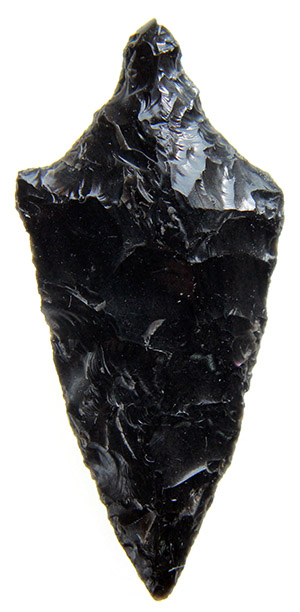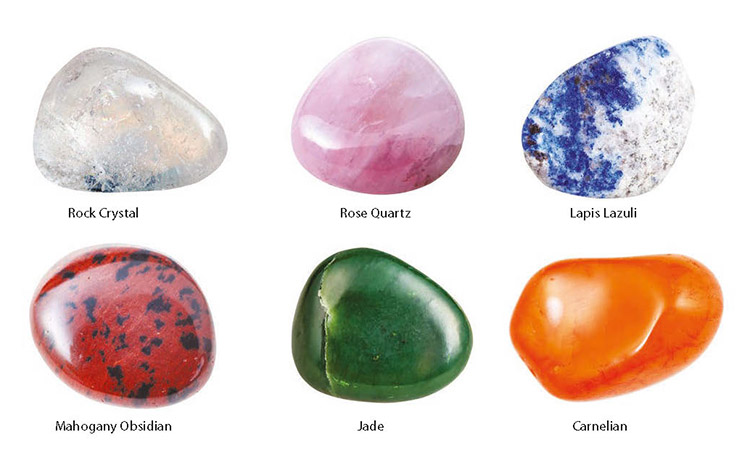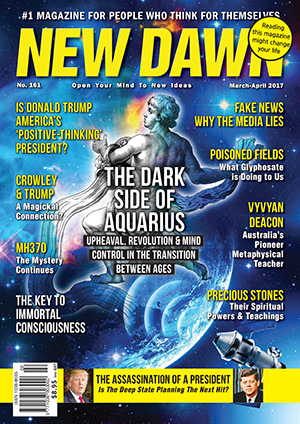Spiritual Powers & Teachings of Precious Stones: The Missing Link
The mineral kingdom has fascinated humankind since its earliest days. Archaeological evidence suggests that early man used stone tools and revered unusual rocks and minerals, sometimes even adorning themselves with it. The lives of humankind, both ancient and modern, are inextricably linked with the mineral kingdom; we live on a planet comprised of hard rock and stone, and many a modern convenience makes use of the gifts of rocks and minerals in order to support comfort, health, and innovation. Apart from the utilitarian applications of mineral substances, we continue to use crystals, minerals, and gemstones for adornment and to confer spiritual gifts as well.
These spiritual powers embodied by stones are owed to the innate perfection of minerals. Minerals are defined as highly ordered, solid substances with regular compositions of inorganic origins. All minerals are innately crystalline, thanks to their high degrees of order and symmetry. Rocks, on the other hand, are aggregates of one or more minerals, and are thusly crystalline on one level or another. (There are notable exceptions to this crystallinity. Materials such as opal and obsidian lack the order required to be crystals; they are thus referred to as mineraloids.) Although ancient people may not have been able to effectively analyse the structure, composition, and other characteristics of precious stones, they still knew them to be special, if not somehow sacred.
Through the ages different cultures employed rocks, gems, and crystals as tools for healing, talismans to draw positive influences into their lives, and as material embodiments of Divine Law. The messages embodied in the crystal kingdom resonate with us at a very primal level, and the modern art of crystal healing is carrying on this deep attraction to crystals even today. The average book on crystals and gemstones will enumerate the properties of stones, perhaps even hundreds of stones, but they seldom dig deep enough to really show how and why crystals work. This missing link has always been what drives me forward in my research.
Archetypal Roles of Rocks

Wherever humankind encountered precious and common gems alike, these sacred stones are usually described with startlingly similar themes. For example, obsidian, a natural glass formed when lava cools too quickly for crystals to grow, is found in regions worldwide where there has been volcanic activity. Ancient people prized this mysterious stone for its predisposition to break into sharp edges, as well as for its characteristic reflective properties. As a result, no matter where or when obsidian has been used by ancient people, the same archetypal roles are evidenced in the archaeological record. Cutting edges, such as knives, spear points, and arrowheads abound, while obsidian mirrors have been unearthed in locations as far apart as the Anatolian peninsula and Central America.

The widespread, cross-cultural uses of gemstones hint at their spiritual teachings and healing qualities. Continuing with the example of obsidian, its sharp, incisive quality translates to being very protective; it is an ideal stone for the spiritual warrior. More importantly, it helps the mind to become as deft as the sharpest blade, for it engenders the ability to cut through illusion, fear, and doubt. The reflective nature of the obsidian mirror reminds spiritual seekers that we must confront the world for what it truly is. This can mean honestly looking into the recesses of the mind where the shadow self lies in wait. The obsidian mirror also awakens the inner vision to look beyond material reality. In doing so we are brought closer to the threshold between ordinary consciousness and the abode of all things spiritual. At this liminal zone is where we receive spiritual initiation; only then can we cross the boundary between worlds.
Obsidian confers these teachings through the symbolic language of form and application through the aeons that it has co-created with humanity. In a similar fashion, many crystals relay their teachings throughout the world’s history. It would be difficult to overlook the common themes that disparate cultures attributed to stones such as rock crystal, jade, carnelian, diamond, or emerald. The mineral kingdom speaks a language so fundamental that it transcends the boundaries of language, age, and culture. Only by cross-examining the same stone from many perspectives can we really see just how universal its gifts truly are.
Our ancestors learned to speak the language of stone through trial-and-error. The curative powers of gems may have been reliant upon the doctrine of signatures, wherein the appearance or other quality of a substance bears a resemblance to a condition or body part that it is thought to heal. Myths surrounding rocks and minerals also provide much insight into the lessons and healing qualities embodied within the mineral kingdom. Today we can take the best and most consistent of these messages and apply them to our personal relationship with our most beloved crystals.

How Crystals Work
The world in which we live is awash in vibration. Living tissue, inanimate rocks, and everything in-between produces its own signature energy field. These fields are comprised of electromagnetism, and they expand in all directions at once at the speed of light. Some of these energy fields are well documented by science, including the electric and magnetic fields produced by the heart and brain (which are the primary measurable elements of the human aura), as well as the deleterious energy fields produced by some electronics and other modern conveniences. However, every single substance, action, or thought has its own energy field. These fields are carriers of information, and they interact with one another whenever they meet.
Crystals are special among material substances because of their high degrees of order, symmetry, and coherency. A crystal is defined as a solid substance with regular composition and a symmetrical arrangement of its constituent molecules, atoms, or ions. This internal framework is known as a crystal lattice. The lattice, and therefore its components, is responsible for the physical, chemical, and optical properties of a crystal. The subtle energies are naturally determined by the crystal lattice, too.
Crystals of all sorts are capable of reflecting, refracting, transducing (or translating), storing/retrieving, receiving, transmitting, amplifying, and cohering energy or information. Each of these is a function of the crystal’s inner, geometrical arrangement. Because crystalline materials, such as rocks and gemstones, exhibit such high degrees of perfection, they produce orderly energy fields. This means that rocks and minerals function as solid-state oscillators, as their crystalline structure and unique compositions enable them to resonate at an exact range of frequencies, thereby broadcasting this energy wherever they are placed.
 The human energy field is subject to change according to mood, diet, environment, mental and emotional habits, and even the people around you. Our energies fluctuate measurable, and I would wager that our subtle energies – those that cannot yet be measured by science – change even more readily. This means that our state of being can be easily influenced by all those factors to which you are exposed. Crystals, however, only ever broadcast their fundamental signals. For this reason, they can entrain our own energy fields through the regularity and consistency of their own energies.This means that wearing, carrying, or even being near your favourite crystals promotes positive changes at the immaterial, energetic level. These changes can first be experienced as subtle shifts in mood, perception, or as changes on the spiritual or intuitive level of our makeup. Wherever there are positive changes at these levels, there are also shifts in our biochemistry. Positive psychological states rely upon different hormones than negative ones; changes in our biochemistry have demonstrable effects on our physiological process, too. Thus, crystals and gemstones offer help on virtually every level of our being.In order to understand the depth of a stone’s gifts, one would need to learn how to interpret its composition, morphology, formation process, and other properties. These properties often run much deeper than others, such as colour, which accounts for only a small fraction of a stone’s net effects. In sifting through these properties, you’ll find that silica has an expansive quality, where iron is grounding; you will also experience chrome-bearing gems as uplifting to the heart, while manganese-rich minerals might soothe emotional trauma. Minerals belonging to the cubic crystal system are earthy and stabilising, whereas triclinic crystals can help you reinvent yourself and see from an entirely new perspective.Although few crystal teachers, healers, and writers have explored this topic at any great length to date, you can look for connections as you experience the energy of crystals firsthand. In my college years, I spent several years working at an earth science museum; it housed an impressive mineral collection, and the director allowed me unprecedented access to its specimens for personal study. At that stage in my life, I had been collecting rocks and minerals for over a decade, but my primary interest in them was spiritual. Although I’ve always been a science fan, this opportunity granted me a deeper understanding of mineral science.I began to notice that when I read books on crystal healing, authors from radically different backgrounds would often describe gemstones with similar structures or compositions with strikingly similar language. I noticed trends among these decidedly unscientific works, and it helped me uncover that there are patterns presented by the composition, geometry, and other properties intrinsic to each stone. Even when we look into the distant past, ancient people often attribute properties to stones that can be explained by these scientific properties, even though they had no way of determining where the stones were from or what their crystal system might have looked like.
The human energy field is subject to change according to mood, diet, environment, mental and emotional habits, and even the people around you. Our energies fluctuate measurable, and I would wager that our subtle energies – those that cannot yet be measured by science – change even more readily. This means that our state of being can be easily influenced by all those factors to which you are exposed. Crystals, however, only ever broadcast their fundamental signals. For this reason, they can entrain our own energy fields through the regularity and consistency of their own energies.This means that wearing, carrying, or even being near your favourite crystals promotes positive changes at the immaterial, energetic level. These changes can first be experienced as subtle shifts in mood, perception, or as changes on the spiritual or intuitive level of our makeup. Wherever there are positive changes at these levels, there are also shifts in our biochemistry. Positive psychological states rely upon different hormones than negative ones; changes in our biochemistry have demonstrable effects on our physiological process, too. Thus, crystals and gemstones offer help on virtually every level of our being.In order to understand the depth of a stone’s gifts, one would need to learn how to interpret its composition, morphology, formation process, and other properties. These properties often run much deeper than others, such as colour, which accounts for only a small fraction of a stone’s net effects. In sifting through these properties, you’ll find that silica has an expansive quality, where iron is grounding; you will also experience chrome-bearing gems as uplifting to the heart, while manganese-rich minerals might soothe emotional trauma. Minerals belonging to the cubic crystal system are earthy and stabilising, whereas triclinic crystals can help you reinvent yourself and see from an entirely new perspective.Although few crystal teachers, healers, and writers have explored this topic at any great length to date, you can look for connections as you experience the energy of crystals firsthand. In my college years, I spent several years working at an earth science museum; it housed an impressive mineral collection, and the director allowed me unprecedented access to its specimens for personal study. At that stage in my life, I had been collecting rocks and minerals for over a decade, but my primary interest in them was spiritual. Although I’ve always been a science fan, this opportunity granted me a deeper understanding of mineral science.I began to notice that when I read books on crystal healing, authors from radically different backgrounds would often describe gemstones with similar structures or compositions with strikingly similar language. I noticed trends among these decidedly unscientific works, and it helped me uncover that there are patterns presented by the composition, geometry, and other properties intrinsic to each stone. Even when we look into the distant past, ancient people often attribute properties to stones that can be explained by these scientific properties, even though they had no way of determining where the stones were from or what their crystal system might have looked like.
Moving Towards a Deeper Relationship with Stones
Although there is a rich history of using gemstones and a model to explain the mechanisms for their use based on their scientific properties, the honest truth is that there is no one-size-fits-all list of crystal properties. Even two specimens of the same mineral species will have minor variations on a microscopic level, just as no two snowflakes are alike. The same holds true for human beings. We are all undergoing our own growth processes, each one complete with its own obstacles, lessons, and rewards. It is simply unrealistic to expect that you will have identical results from using lapis lazuli as I will. Although there are outcomes that are more or less universal, we may experience these gifts in radically different ways. Even though the overall energy of lapis remains unchanged, our energy field may implement the positive changes catalysed by this gemstone in unique ways.
At the end of the day, the very best way to learn about what your stones offer is to sit back in a quiet place and explore them. Get to know them visually as you inspect them from every angle. Feel their surfaces and sense the weight of the stone in your hands. Close your eyes and tune in to the energy of your chosen crystal, and you may be surprised at what you find. Perhaps your inner awareness will speak to you in visual symbols that can be translated to understand the gifts your stone offers. Maybe you’ll be subtly guided to place the stone somewhere on your body. Whatever comes, don’t judge it; simply allow it to unfold.
Only by getting to know your stones on a personal level can you really grow and benefit from the mysterious energies they emit. For this reason, when I wrote The Seven Archetypal Stones, I chose to focus on a select few gemstones. As I spent time getting to know those seven rocks and minerals, I allowed the spiritual experiences I had with them guide and shape my research into their archetypal roles and teachings. The stones themselves inspired the exercises contained within the book; each one helps you apply the stone’s energy in order to ground the spiritual lessons in a practical way.
Ultimately, all spiritual practice should have a practical outcome. Crystal healing should be no different. Only by forging a deeper relationship with these crystalline beings can we truly apply the lessons that they have in store for us. Learning that herderite supports your spiritual evolution or that chrysoprase heals a broken heart might point you towards finding the right stone for your life. However, unless you can truly learn to appreciate the stone’s effects and apply them in a pragmatic way, they are nothing more than idealised definitions. By forging a relationship with your crystals you invite them to revitalise and reorganise your very being. By connecting more deeply to the mineral kingdom, we allow the stones of the earth to change the fabric of our lives for the better.
Nicholas Pearson’s The Seven Archetypal Stones: Their Spiritual Powers and Teachings is available from all good bookstores.
About the Author
![]() Nicholas Pearson has been immersed in all aspects of the mineral kingdom for more than 20 years. He began teaching crystal workshops in high school, later studying mineral science at Stetson University while pursuing a degree in music. A teacher of Usui Reiki Ryoho, he offers crystal and Reiki classes throughout the United States. He is the author of The Seven Archetypal Stones, Crystals for Karmic Healing, and Crystal Healing for the Heart. He lives with his partner in Orlando, Florida. Author Archive Page
Nicholas Pearson has been immersed in all aspects of the mineral kingdom for more than 20 years. He began teaching crystal workshops in high school, later studying mineral science at Stetson University while pursuing a degree in music. A teacher of Usui Reiki Ryoho, he offers crystal and Reiki classes throughout the United States. He is the author of The Seven Archetypal Stones, Crystals for Karmic Healing, and Crystal Healing for the Heart. He lives with his partner in Orlando, Florida. Author Archive Page
© NEW GNOSIS COMMUNICATIONS INT. PTY LTD
– Come Like Us on Facebook – Check us out on Instagram –
– Sign Up for our Newsletter –



 www.newdawnmagazine.com
www.newdawnmagazine.com










